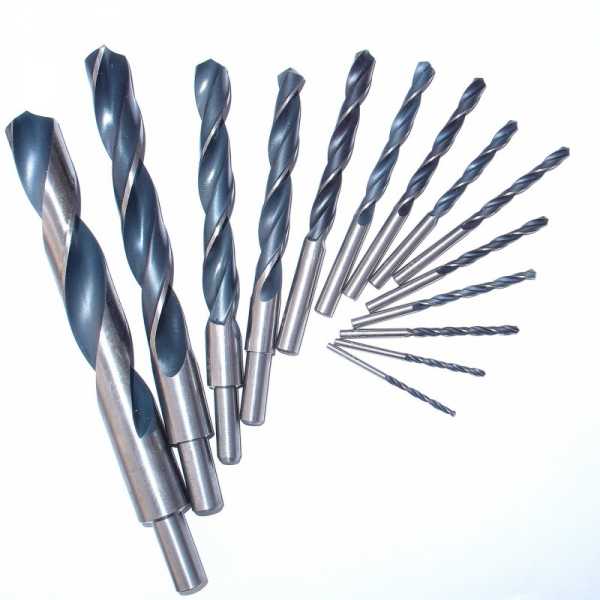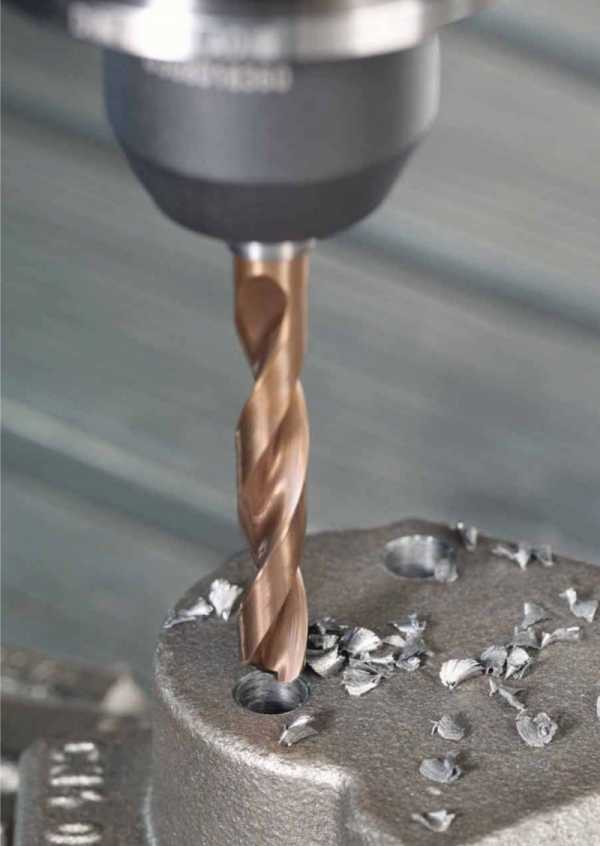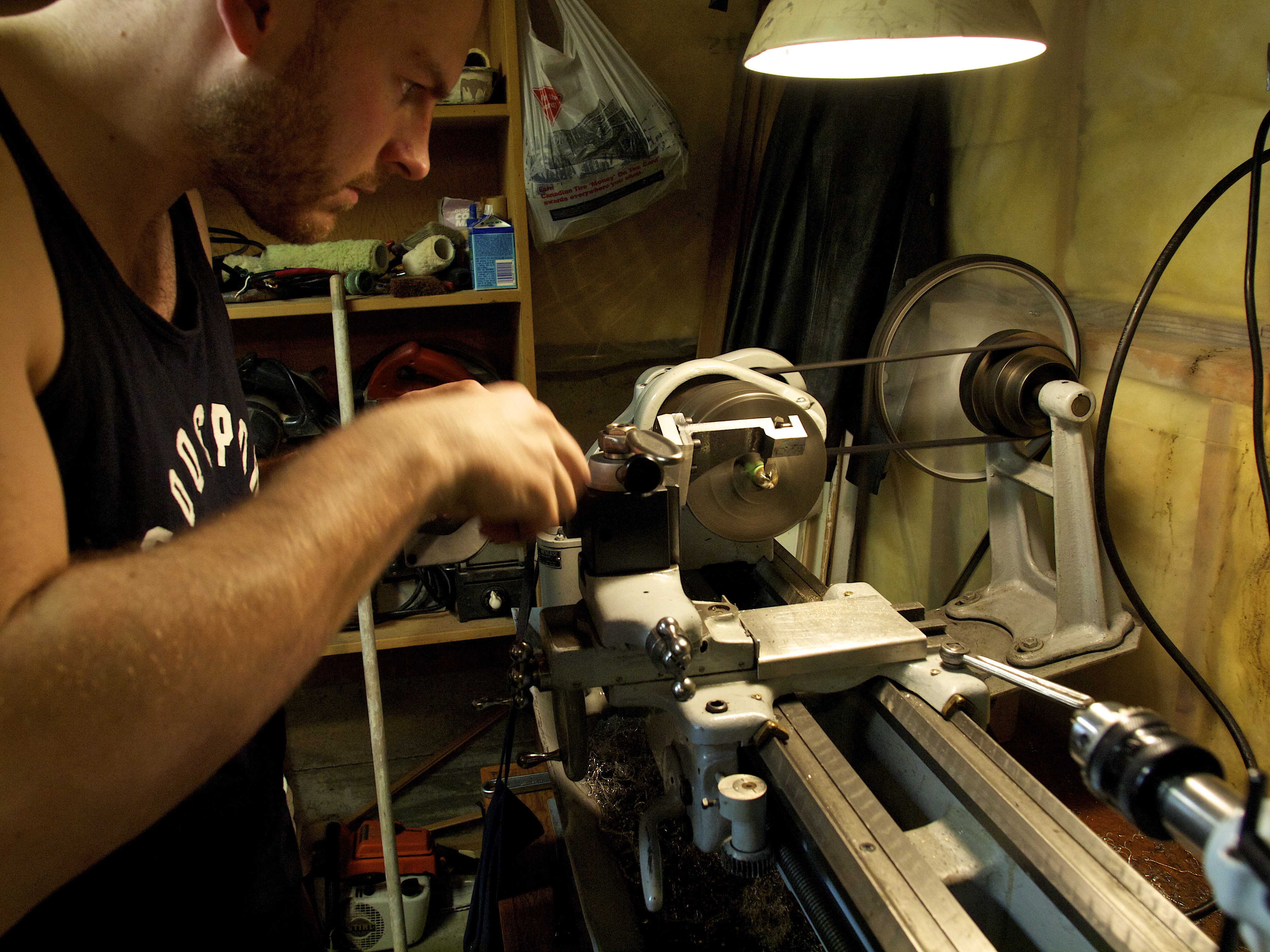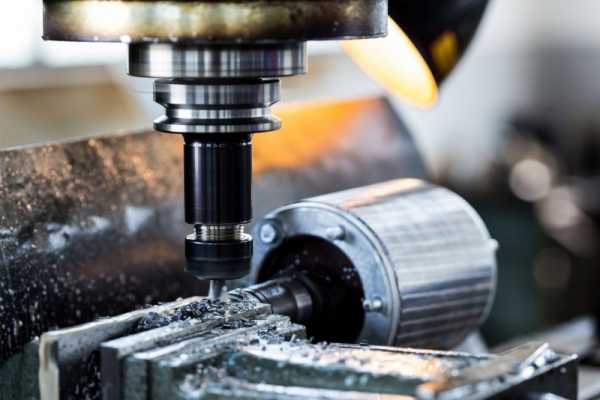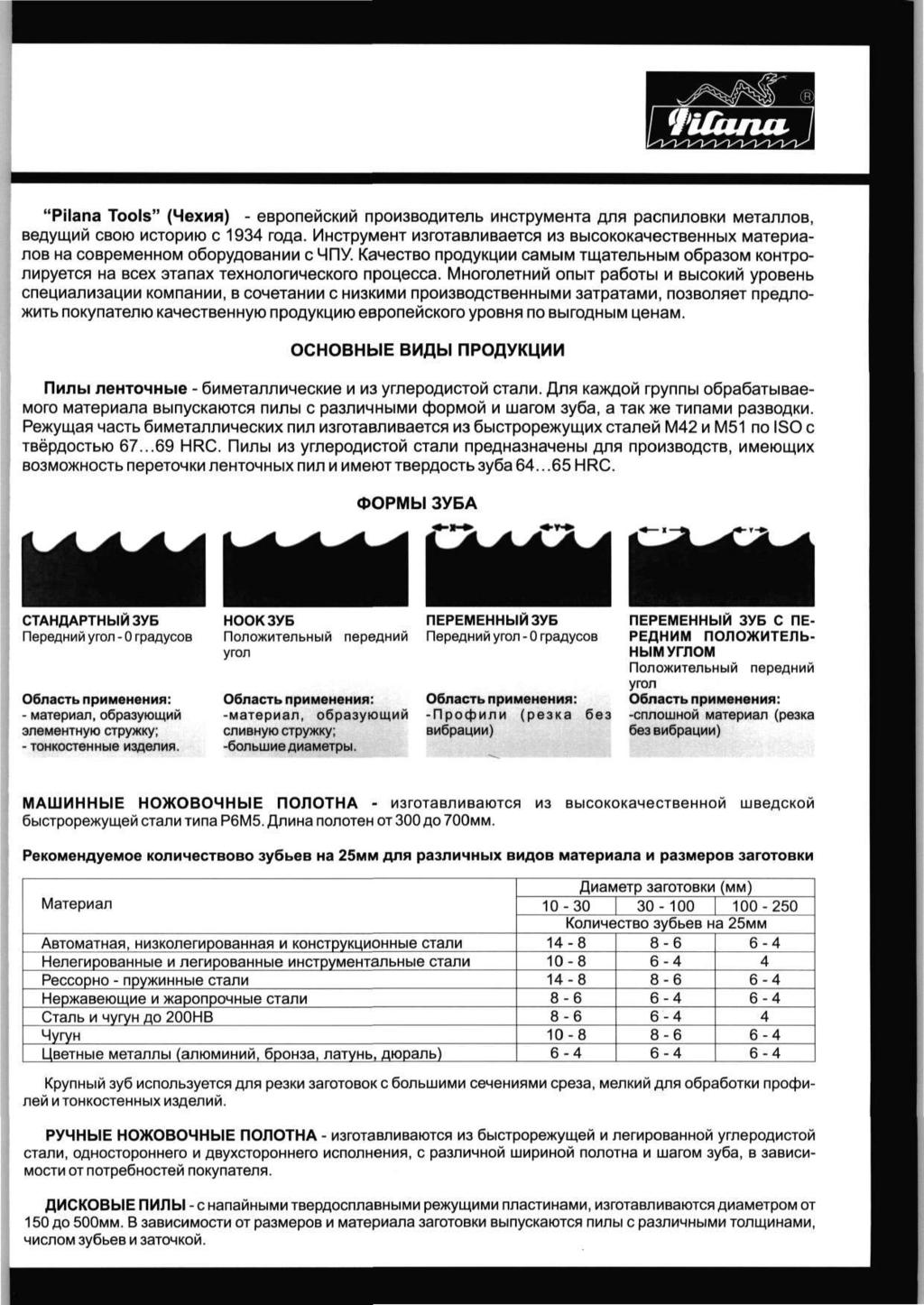Design features of the tool
Drills with carbide inserts are characterized by a number of design features. Let's list the most important ones.
- The working length of the drill, reduced by 20–35%, is explained by the fact that its regrinding is performed only on the carbide insert. The length of this type of drill, if used in conjunction with a jig, can be the same as that of a high-speed tool.
- The increase in the diameter of the core of the drill towards the shank is carried out in the range of 1.4–1.8 mm for every 100 mm of length, as with drilling tools of other categories.
- The angle of inclination of the helical groove of the tool depends on how deep the hole needs to be made.
- On the transverse edge of the drill, it is necessary to perform a sharpening with dimensions of 1.8–3.5 mm, which allows to reduce axial forces and reduce the load on the tool body.
- The taper shank, with which the drill is fixed in the spindle of the machine, must be precisely matched to the seating part, which will increase the rigidity of the drill and minimize the risk of vibration loads that can cause the carbide insert to chip and even break.
- To increase the reliability of the use of carbide drills for metal, a hole is often made in their inner part for supplying a cooling lubricant. This allows you to reduce the cutting temperature, reduce the intensity of tool wear, as well as facilitate the process of removing chips from the machining zone.

Drill device with removable plates
To give the working part of the drill the required hardness (56–62 units on the HRC scale), the tool is subjected to heat treatment, which, as a rule, is performed simultaneously with the brazing of carbide inserts.
High productivity of processing, as well as stability of drills of this category are provided by a number of parameters. This includes the shape of the carbide insert, the geometric parameters of its front surface, as well as the material from which such an insert is made. Currently, the most widespread tools are tools with carbide inserts of the correct three- and four-sided configuration, which allow drilling holes with a practically flat bottom.
Drills with such inserts, the cutting part of which is made in the form of a wave, allows machining using step-by-step plunge technology. The use of the latter not only ensures the stabilization of the position of the tool at the moment of its penetration into the processed material, but also minimizes the risk of its withdrawal during further processing. In addition, the corrugated drill can significantly reduce the cutting forces generated during the drilling process.

Drills with mechanical fastening of replaceable polyhedral plates (drills with MNP)
The design of drills, equipped with removable carbide inserts, allows them to perform not only drilling, but also such technological operations as boring pre-made holes, chamfering. In such cases, a peripheral carbide insert mounted on the tool is used.
Drills with hard inserts, which are mechanically attached to the tool, are effectively used for machining inclined and concave surfaces, while machining with such a tool can be performed without pre-drilling holes.To successfully cope with such a technological task, the amount of feed with which the tool plunges into the workpiece material must be reduced by 50–70%.
Sharpening
To impart the required hardness to the drill in its working part (its measurement is carried out in accordance with the HRC scale), it is thermally processed, basically this process coincides with the soldering of the plates themselves. If the inserts are profiled, the drilling result will be much better. Removable plates on twist or monolithic drills are suitable not only for drilling holes, but also for boring ready-made grooves and holes.
If the drill is equipped with wave-shaped plates, it can be used in a more subtle technique - step-by-step insertion. This technology stabilizes the position of the drill or hammer drill at the initial stage of tapping, and also minimizes the risk that the tool will "lead" in the process.
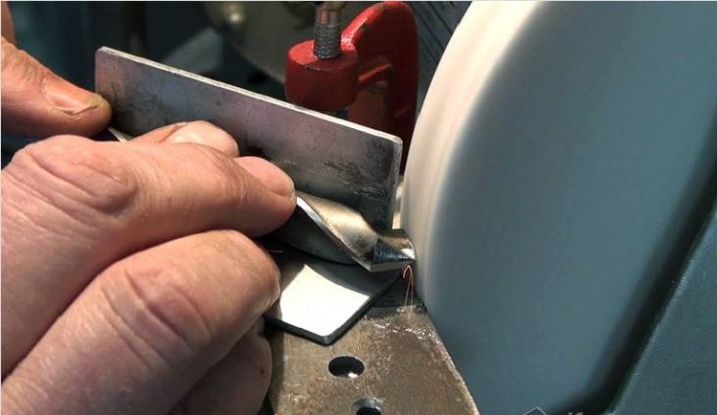
How to sharpen carbide drills is shown in the following video.
How to choose?
When choosing carbide tips, there are two main factors to consider: what surface you plan to work on, and what depth and diameter the hole should have. This will immediately narrow the selection down to a small group of drills.
Next, you need to pay attention to what material the cutting edges are made of, how strong the carbide is
The reputation of the manufacturer of the product and its quality are no less important, because, as a rule, the price for such gimbals is quite high. Therefore, you should carefully study the properties of the product before paying for it. Of course, the more famous the manufacturer of the drill is, the higher the price for it, but the quality of such products is also quite high.
Do I have to pay for tools whose manufacturer is unknown, and the quality raises a lot of doubts? Each buyer answers this question for himself.
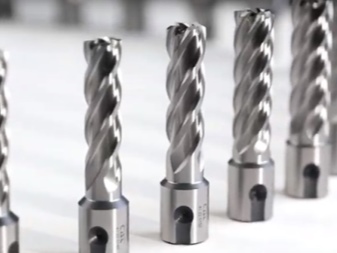

Drill design with victorious inserts
The drills produced with a victorious tip initially have the required cutting angles, so there is no need to sharpen them additionally. The cutting part of the drill with victorious soldering is formed of two "shoulders", approximately the same in width. The point at which such "shoulders" intersect will coincide with the center of the hole being formed, and its diameter will correspond to the size of the widest of them. The axis of rotation of the winning drill will coincide with the center of the hole if the width of the "shoulders" is the same. If there is a difference between the width of the "shoulders", then the diameter of the hole being formed will differ from the transverse size of the tool by its value. In the event that there is a difference in their width between the elements of the cutting part, this can lead not only to an increase in the load on the drill and the operator's hands, but also to breakage of the drill.

Winder drill designs
If drills with victorious tips are dull, they can be sharpened in the same way as conventional drills. When sharpening, it should be borne in mind that the alpha angle of the cutting part of the drill should be the smaller, the harder the material being processed. Victory is very afraid of overheating, and this must be taken into account when sharpening. In order not to face a situation where the victorious carbide tip begins to crack or even separate from the main part of the tool, it is necessary not to bring it to overheating and cool it as often as possible, for which you can use ordinary water. If, nevertheless, the victorious elements of the drill are overheated, they should be allowed to cool in natural conditions and in no case should they be subjected to sharp cooling with a liquid (this can lead to their cracking).
There are a wide variety of carbide tipped drills on the market today that are designed to handle specific materials.Information on the purpose of such drills, if they are produced in serial conditions, can be found on the packaging.

Shapes of sharpening drills with victorious tips (according to GOST 22735-77)
Species overview
To date, the attention of buyers is offered a wide range of gimbals with carbide plates, which can be used to process metal and other materials. These nozzles can be classified according to a number of parameters, for example:
- by the material from which the plates are made;
- by the method of attaching these plates to the working part of the nozzle;
- by the shape of the plates;
- in the shape that the grooves have between the cutting surfaces of the nozzle, these grooves are designed to efficiently evacuate chips and other waste arising from the drilling process.
Nozzles equipped with carbide plates have some design features that distinguish them from other "brethren".

This is, first of all, a shorter working part - compared to other types of drills, it is less by 20-30%. This is due to the process of regrinding the drill - it can only be done on carbide inserts. If the drill and the jig make up a set, then the length of the drill is equal to the length of a conventional gimbal.
The diameter in the core of the nozzle in the direction of the shank increases every 10 cm from 1.4 to 1.8 mm. The angle at which you hold the bit is in direct proportion to the depth of the hole to be drilled. The shank in the form of a cone must be well adjusted to the spindle in the machine, because how rigid and strong the grip is, depends on how accurate and high-quality the drilling process will be.

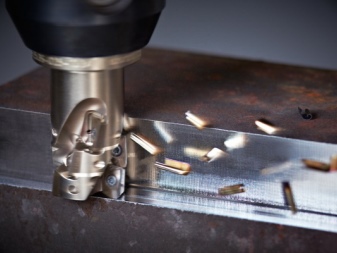
By the method of fixing the plates
The fixation of carbide inserts takes place on the cutting parts either by soldering or by screw (mechanical) connection, then the inserts are replaceable. If soldering is used, re-sharpening is possible only a few times, after which the drill becomes unusable.
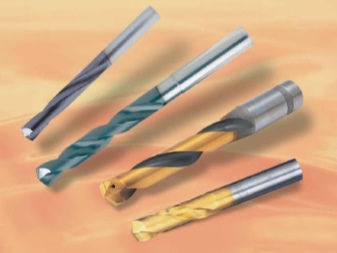
Types of drills with carbide inserts
On the modern market there is a wide variety of carbide drills designed for work on metal and other materials. The classification of such a tool is carried out according to several parameters, which, in particular, include:
- material for the manufacture of a hard-alloy plate, which can be used as alloys of grades VK6, VK8, etc .;
- method of attaching carbide plates to the main part of the drill;
- the shape that carbide plates have;
- the shape of the grooves between the working surfaces of the drill, designed for effective removal of processing waste.
Tungsten-carbide alloys are mainly used as the material for the production of cutting blades, which are equipped with a carbide drill. The most popular is the VK8 grade alloy.
Properties and applications of tungsten alloys
Such alloys, obtained mainly by methods of powder metallurgy, fully correspond to their name - "hard". In particular, the hardness of the popular VK8 grade alloy, depending on the conditions of its production, is in the range of 1670–2800 units on the Rockwell scale. Due to this, the drill, equipped with VK8 alloy cutting inserts, can be successfully used to make holes in materials such as alloy steels (including heat-resistant groups), cast iron, and hard wood species. It is also important that the VK8 grade alloy differs in an affordable cost in comparison with other carbide materials.
Carbide inserts can be fixed to the cutting edge of the drill by soldering or by means of a screw (mechanical) connection. In the first case, carbide inserts can be reground a limited number of times, although they are characterized by higher reliability. In addition, they break quite often.That is why tools have gained great popularity, non-regrowth cutting inserts on which are mechanically attached.
Types of carbide inserts used for drills
To equip drills of this type, carbide inserts are used in the form:
- parallelogram;
- rectangle;
- rhombus;
- irregular triangle (such inserts are characterized by the presence of six cutting edges).
Of great importance when using carbide drills for processing metal and other materials is the shape of the grooves between the working surfaces of the tool. Regardless of the shape of such grooves, their inner surface must be thoroughly polished to ensure efficient chip evacuation from the machining zone.
Internal coolant carbide drill
Home use
Although center drills are professional, many home craftsmen have successfully used them. Such drills are very popular among radio amateurs, who often have to drill small-diameter holes in printed circuit boards. Due to their design features high rigidity, center drills in such situations are more preferable than standard small diameter drilling tools.
Drilling holes in the PCB
One of the operations that is successfully performed with a centering tool is the drilling of screws or screws that cannot be removed with a conventional screwdriver. Using a centering tool, the heads of such non-lengthening fasteners are simply drilled out and can then be easily unscrewed. The easiest way to solve this problem is if you need to drill out the head of a screw or screw, on which slots for cross-type screwdrivers are made. If we are talking about a head with slots for a straight screwdriver, then it must first be screwed in order to indicate the exact place of the drill entry.
Center drill with helical ground and Morse taper shank
It will not be difficult for any home craftsman to purchase a centering tool of any diameter. There is a large assortment of drills on free sale today, including both domestic and foreign brands.
If we talk about the preferences of home craftsmen, then in their environment, judging by the reviews and recommendations, center-type drills produced under the well-known Dormer trademark are very popular. This instrument is of high quality, which can be judged even by its photo, it is reliable and durable in operation.
Dormer center drills are made from HSS tool steel
Centering tool TM Dormer is made of high-speed steel and is subjected to special heat treatment to ensure high hardness of the finished product. As a result of such technological manipulations, a tool is obtained with which you can easily drill very hard metals, including stainless steel.
The manufacturer adds cobalt to the metal from which Dormer center drills are made, which allows the cutting tool to maintain its original hardness even at elevated processing temperatures. The durability of the products of this brand is also commendable.
How to distinguish original products
Not all Forstner drills on the market today are patented over 120 years ago. Meanwhile, most of them work on a similar principle, the essence of which is as follows:
- The wood fibers located at the edges of the hole being formed cut the outer rim of the tool.
- The radially positioned cutting edges of the inner cutters simultaneously remove material from the center of the hole being formed and guide the chips upward, acting like small planers.
There are two main features to distinguish real Forstner drill on wood from unoriginal. These signs are:
- the presence of a small diameter hole in the central part of the tool;
- the presence of an external cutting rim in the drill design, which is interrupted by the main cutting blades in only two places (it should be borne in mind that the main cutting blades on the original tool are sharpened only by hand).
Forstner's drill: 1 - original; 2 - for machine sharpening; 3 - with carbide cutters; 4 - with teeth
True Forstner cutters are now manufactured by only one company, Connecticut Valley Manufacturing, which has manufacturing facilities in the United States. Unlike non-original die-cast tools, a real Forstner cutter is machined from a single piece made from carbon steel.
Due to the significant thickness of the cutting edges, real Forstner drills have less overheating during drilling and, accordingly, have a higher resistance. The cost of real Forstner drills is quite high, which is fully justified both by the large resource of their work, and by the fact that they can be processed at higher speeds, while the holes created are highly accurate and accurate.
The small diameter hole found in Forstner drills makes them more convenient for processing small workpieces. Meanwhile, getting the central part of this tool into the crosshair is problematic, so you have to focus on the outer diameter of the drill, which makes drilling somewhat difficult.
Tool options with drill depth limiter
A non-original tool can be distinguished from real Forstner drills by the following features:
- elongated central point;
- the presence of cutouts in the rim located on the back of the inner blades (such cutouts allow machine sharpening of the tool, which significantly reduces its cost compared to original drills, the geometry of the cutting edges of which is adjusted only manually).
These differences explain the fact that non-original tools are much cheaper than real Forstner drills.
On the modern market, there is another category of non-original Forstner drills, the cutting part of which is equipped with carbide inserts. Due to the peculiarities of their design, such drills for wood do not overheat and are distinguished by a large resource of use, and their cost is comparable to the price of the original tool. Meanwhile, they also have one big drawback: their cutting plates, soldered onto the cutting part, occupy a much smaller part of the circumference than the solid rim. Due to such a design flaw, the drill begins to vibrate intensively during machining and jumps off the surface to be machined when drilling is performed at an angle or from the very edge of the workpiece.
Forstner drill with brazed cutters
Another non-original tool, also called a Forstner drill, is distinguished by the fact that teeth are made on its cutting rim, resembling cutting elements of a saw. Due to the fact that the contact area of such teeth with the material being processed is much less than that of a solid rim, this type of tool does not overheat during processing, which is especially important when drilling large-diameter holes.
That is why wood drills designed to produce holes with a diameter of more than 25 mm are made with just such teeth on the cutting rim.Like drills with carbide inserts, a tool with teeth on the cutting edge does not perform well when drilling holes located at an angle or at the very edge of the workpiece: in such cases, it can simply jump off the machining zone.
Drill with serrated cutting edge

